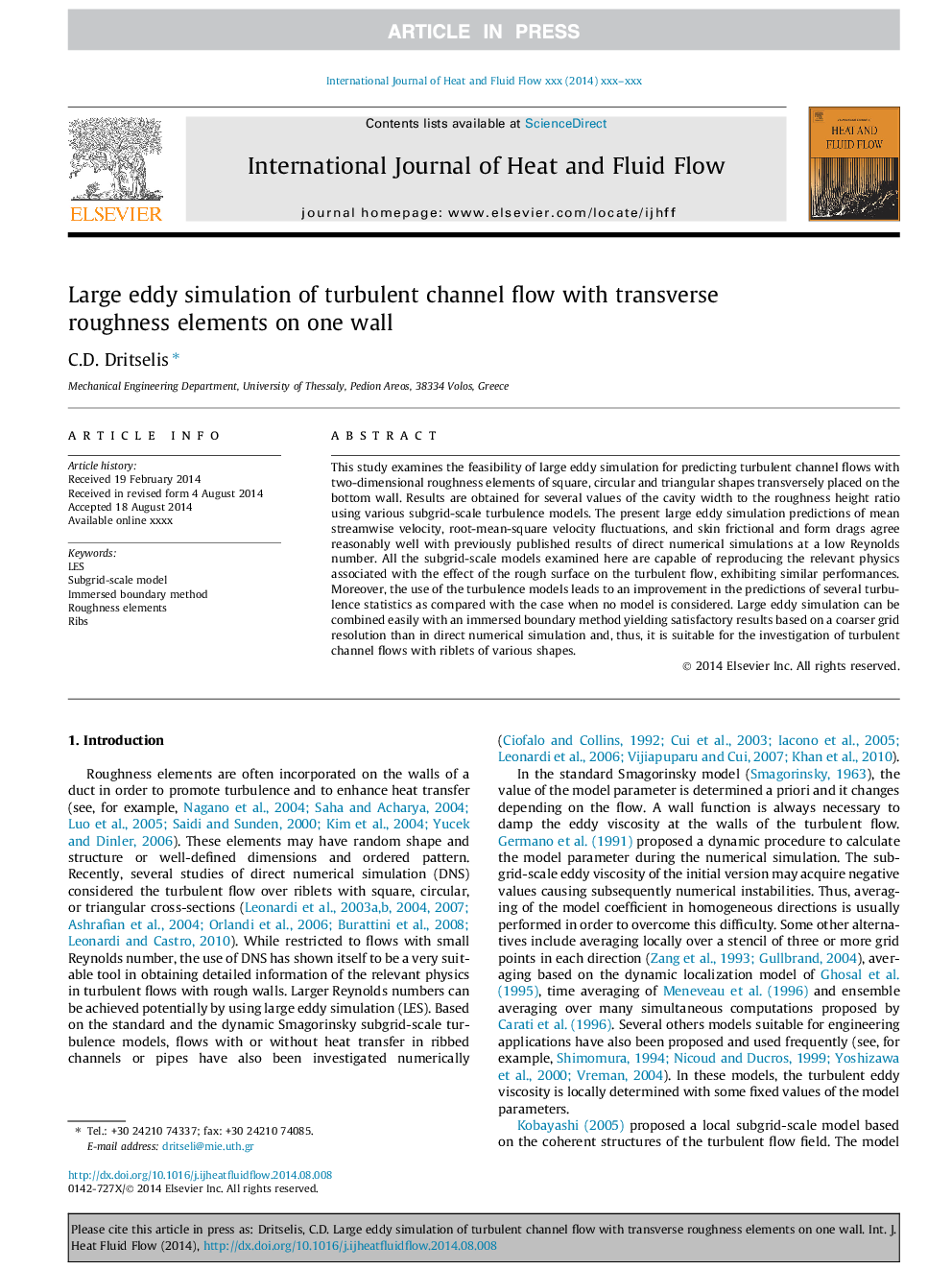| Article ID | Journal | Published Year | Pages | File Type |
|---|---|---|---|---|
| 7053622 | International Journal of Heat and Fluid Flow | 2014 | 15 Pages |
Abstract
This study examines the feasibility of large eddy simulation for predicting turbulent channel flows with two-dimensional roughness elements of square, circular and triangular shapes transversely placed on the bottom wall. Results are obtained for several values of the cavity width to the roughness height ratio using various subgrid-scale turbulence models. The present large eddy simulation predictions of mean streamwise velocity, root-mean-square velocity fluctuations, and skin frictional and form drags agree reasonably well with previously published results of direct numerical simulations at a low Reynolds number. All the subgrid-scale models examined here are capable of reproducing the relevant physics associated with the effect of the rough surface on the turbulent flow, exhibiting similar performances. Moreover, the use of the turbulence models leads to an improvement in the predictions of several turbulence statistics as compared with the case when no model is considered. Large eddy simulation can be combined easily with an immersed boundary method yielding satisfactory results based on a coarser grid resolution than in direct numerical simulation and, thus, it is suitable for the investigation of turbulent channel flows with riblets of various shapes.
Related Topics
Physical Sciences and Engineering
Chemical Engineering
Fluid Flow and Transfer Processes
Authors
C.D. Dritselis,
